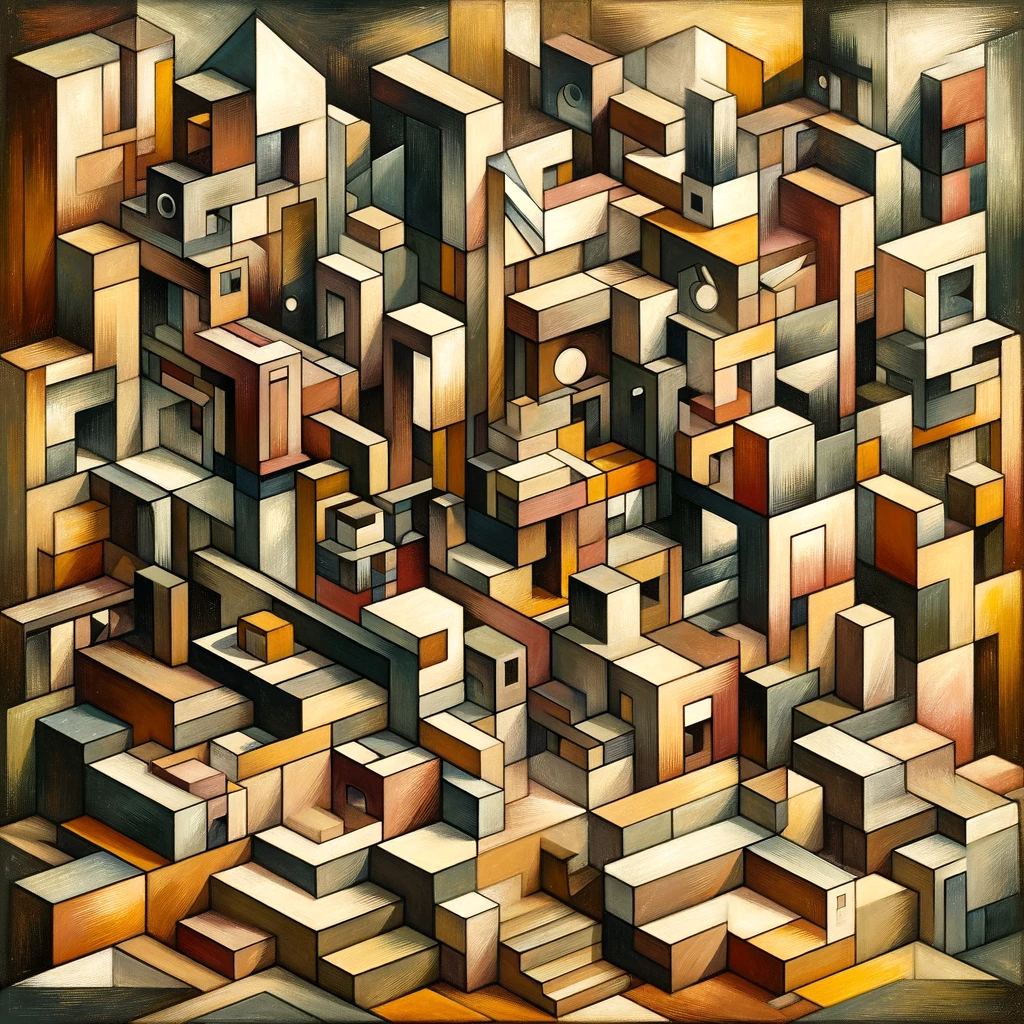In the early 20th century, a new art movement emerged that would forever change the landscape of the art world. Cubism, pioneered by illustrious artists Pablo Picasso and Georges Braque, proposed a radical new approach to representation, one that emphasized the formal structure of objects over their realistic depictions. This revolutionary style invited viewers to see the world from multiple perspectives simultaneously, redefining the parameters of artistic expression.
The Genesis of Cubism
Cubism arose in Paris, around 1907, breaking away from the conventional norms of European art which largely prioritized perspective and realism. Inspired by the simplicity of African and Iberian art, Picasso and Braque embarked on a quest to reinvent the representation of reality in art, leading to the birth of Cubism.
Characteristics of Cubist Art
At its core, Cubism sought to break free from the chains of perspective that had shackled art for centuries. It rejected the traditional techniques of foreshortening and perspective to represent three-dimensional objects on a flat canvas. Instead, objects were dissected into a multitude of geometric forms and then reassembled in an abstract and fragmented way, often depicting the subject from multiple viewpoints at once.
The Cubist approach enabled artists to emphasize the two-dimensional flatness of the canvas, a stark departure from the illusionistic depth that had been a crucial aspect of painting since the Renaissance. This style often resulted in complex, semi-abstract still lifes and figure compositions, reflecting a deeper understanding of form and space.
Cubism evolved through two main phases: Analytic Cubism and Synthetic Cubism. Analytic Cubism was the initial phase where the artist analyzed the subject from many angles and reconstructed it within a muted color scheme. Synthetic Cubism, the later phase, allowed for more decorative strategies, collage elements, and a larger variety of viewpoints.
Pablo Picasso and Georges Braque: The Cubist Revolutionaries
The names Pablo Picasso and Georges Braque are synonymous with Cubism. Their collaborative exploration and innovation gave birth to and nurtured this groundbreaking style. Picasso's 'Les Demoiselles d'Avignon' is often considered the first Cubist painting, while Braque's works, like 'Houses at L’Estaque', initiated the transition towards Analytic Cubism.
Picasso, a Spanish expatriate, was a prolific artist known for his ability to work in multiple styles throughout his career. However, his contribution to Cubism solidified his status as one of the most influential artists of the 20th century.
Braque, a Frenchman, worked closely with Picasso during the formative years of Cubism. He was instrumental in developing the analytical and synthetic phases of this style. His art often echoed Picasso's, yet retained distinctive elements, reflecting his background in Fauvism and his fascination with spatial structures.
Cubism's Legacy
Cubism's impact on the art world is immeasurable. By fracturing objects into geometric shapes and showcasing multiple viewpoints on a flat canvas, Cubism challenged traditional forms of representation, paving the way for pure abstract art. It played a vital role in the development of many other modern art movements like Futurism, Suprematism, and Constructivism.
More than a century later, the legacy of Cubism endures. It continues to inspire artists, proving that the essence of an object can be captured not just through a single viewpoint, but through a kaleidoscope of perspectives. Indeed, Cubism reminds us that there are countless ways to perceive the world, and each one has its own validity and beauty.
